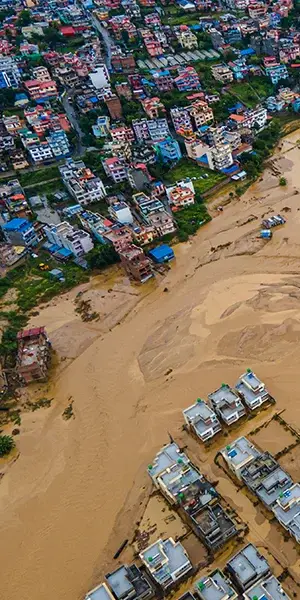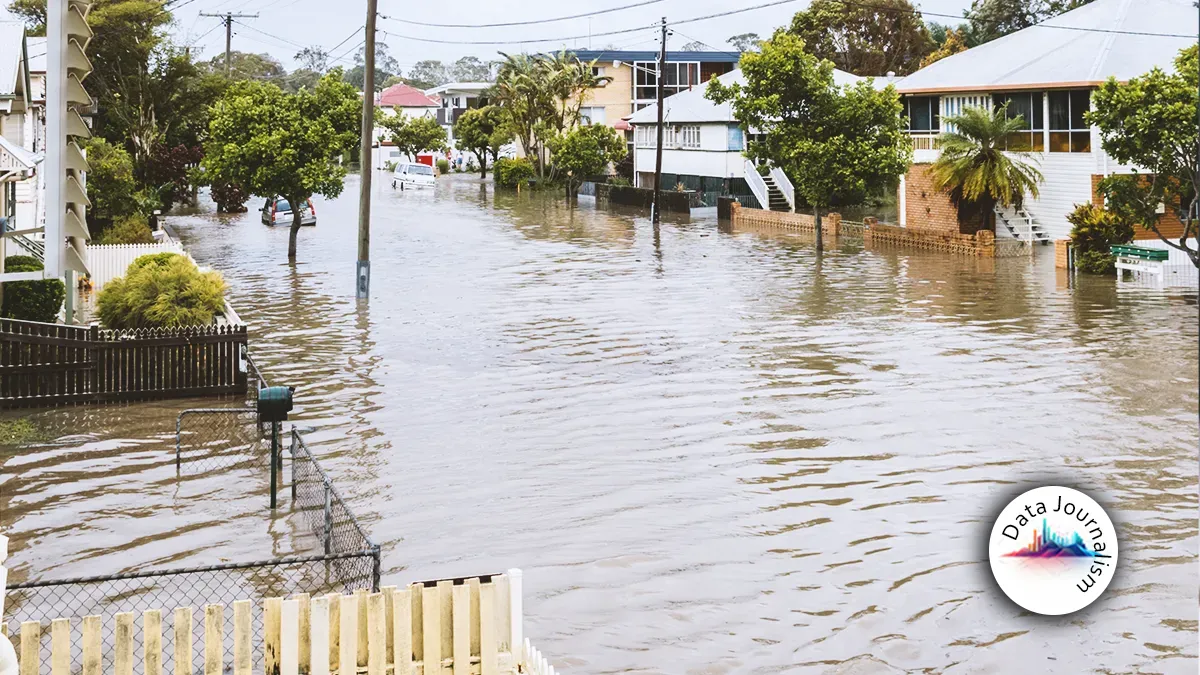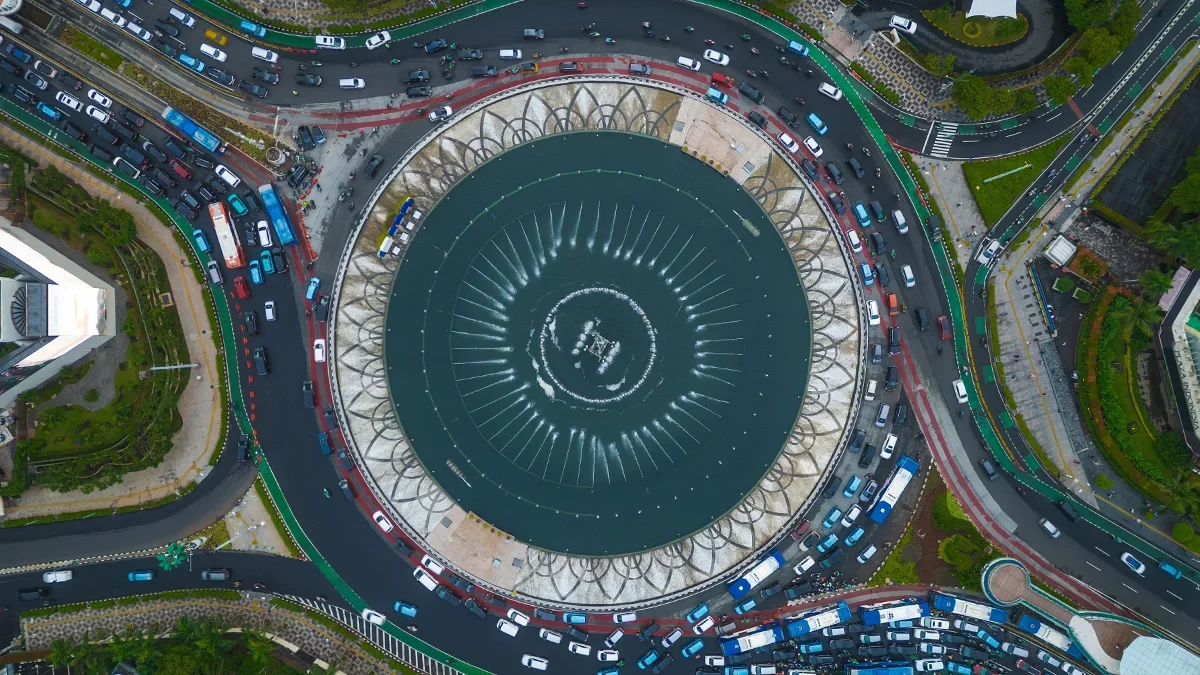(Re)in Summary
• A series of floods in China in 2023 made this risk Asia Pac’s costliest Nat Cat peril for the fourth year in a row, according to Aon data.
• Global Nat Cat losses were over US$100bn in 2023 – lower than the previous two years’ numbers.
However, economic nat cat losses are predicted to increase 5-7% per year over the long term, in excess of expected global GDP growth in the region of 3%.
• This trend would see insured losses double in 10 years warns Swiss Re.
• APAC’s insurance protection gap stood at 91% in 2023, said Aon.
Sydney’s torrential downpour and resultant flooding over the weekend are symptomatic of the flood risk present in Asia Pac, which continues to be the main driver of natural catastrophe (nat cat) losses in the region.
According to Aon’s ’24 Climate and Catastrophe Insight’ report, this is the fourth year in a row that flood has been the costliest Nat Cat peril in APAC, accounting for 64% of total losses in 2023.
A series of inundations across China in 2023 resulted in US$32bn worth of economic losses and US$1.4bn of insured losses in 2023.
“Much of the flood losses in 2023 occurred in South and Southeastern Asia, where the insurance penetration remains very low.
In APAC, flooding remained a recurring threat with annual losses exceeding US$30bn every year since 2010. Many places saw significant flooding and record rainfall events in 2023 — New Zealand, Japan, Hong Kong, South Korea, India, and Pakistan”, the report said.
Hong Kong saw its property underwriting result dive from a HK$535.3m profit (US$ 68.26m) in 2022 to a HK$65.6m (US$8.37m) loss in 2023, hit hard by flooding that was a result of record rainfall in September (see story below)
Meanwhile, New Zealand was hit with its two costliest weather events on record in 2023, including the Auckland Anniversary floods, with PERILS pegging the industry loss estimate for the event at NZ$2.23bn (US$1.34bn.
Global losses
Global insured natural catastrophe losses exceeded US$100bn in 2023, and this figure is expected to increase by 5-7% per year over the long term.
This figure is above predicted GDP growth according to the Swiss Re Institute (SRI) in its recent, ‘Natural catastrophes in 2023: gearing up for today’s and tomorrow’s weather risks’, report.
“The pace of growth of global insured losses from natural catastrophes greatly exceeds the rate of economic growth. Over the last 30 years, the relative loss burden compared to GDP has more than doubled.
The 2023 insured loss outcome reaffirms the 5–7% annual growth trend in global insured natural catastrophe losses since 1994, and we expect this to continue,” SRI said.
Realised losses for 2023, however, were US$10bn below trend. There was no major event such as 2022’s Hurricane Ian, and tropical cyclone losses were 65% below trend.
According to Aon global economic losses breached US$300bn for the eighth time in a row and were 22% higher than the long-term average.
“Considering weather-related disasters only, the global total was close to long-term and slightly below the decadal averages,” the broker said in its report.
Swiss Re Institute
The last 12 months were the hottest years since global records began in 1850, at 1.18°C above the 20th-century average of 13.9°C, with 24 countries or territories recording their highest ever temperature in 2023.
But SRI said that so far climate change is having a limited impact on Nat Cat losses. Last year the largest single event was the Turkey-Syria earthquake with insured losses of US$6.2bn.
“So far, the impact of changing climates has been small. However, we expect that the contribution from severe weather and other events will likely rise.
By extrapolating the aforementioned long-term growth trend, we estimate that today’s insured losses could double in 10 years,” SRI said.
The rise in Nat Cat losses far outstrips the IMF’s prediction of global economic growth in 2025 of 3.2% and SRI said that a number of factors would drive the increase in Nat Cat related claims.
The reinsurer said that property exposures would continue to grow, especially in high-value areas, and high risk locations such as flood plains or on coastlines.
The overall total consisted of a number of small losses with severe convective storms (SCS), a major driver of claims.
There were a record 142 loss-inducing natural disaster events in 2023 with the combined insured losses from 31 medium severity disasters (losses of $1–5bn), accounting for most of the full-year all peril total. SRI said that losses from this segment are set to rise further.
“The medium-severity category is the fastest growing, both in terms of frequency of events (on average up 7.5% annually over the last 30 years) and insured loss totals (up 7.1%),” said the report.
Aon also highlighted the risk posed by SCS and said that New Zealand, Italy, Greece, Slovenia and Croatia all recorded their costliest weather-related insurance events on record in 2023.
“While no event reached the 10-billion-dollar mark, there were at least 37 billion-dollar disasters in total, marking a new historical record.
Severe convective storms
This underlines the growing frequency of medium sized events, particularly SCS, and their impact on global losses. SCS was the most damaging peril for insurers,” said Aon.
SRI said that global insured losses from SCS hit a record US$60bn in 2023 driven by a continuation of macro-economic factors increasing the cost of claims. While the majority of insurers’ SCS losses (85%) sat in the US the numbers are growing in Europe.
European SCS losses have topped US$5bn in each of the last three years, with hail a particular risk. In July 2023 hailstorms produced a 19cm hailstone, the largest ever seen on the continent as well as inflicted a record US$5.5bn worth of SCS damage.
“Insured losses are currently growing faster in Europe than in the US, and have topped US$5bn in each of the last three years. This warrants and has prompted better monitoring of SCS in Europe than in previous years,” said SRI.
The reinsurer said that after adjusting for general inflation, rising SCS losses were a factor of: economic and population growth, and increased urbanisation.
“Cost increases in the construction sector specifically are another factor driving losses. Climate change effects also factor, but there are still many uncertainties around the associated losses,” SRI said.
The SRI report said that although the Turkey-Syria earthquake was the largest single Nat Cat insured loss of 2023 over 90% of its economic losses (US$92bn) were not insured. The reinsurer said this reflected the ‘dramatic’ protection gap that a large section of the world’s population faces.
Aon said that Asia Pac’s protection gap stood at 91% with just US$6bn of economic losses covered by insurance in 2023, a figure which is below the 21st Century average of US$15bn and compares to a global average of 69%.
Aon said this protection gap highlighted the need to expand insurance coverage across the region.
SRI warned that with the economic cost of Nat Cat events likely to outstrip GDP growth that protection gaps could become an issue even for advanced markets.
“Climate change will translate into variations in the frequency and severity of some natural hazards, bringing higher economic losses for certain perils in some regions in the world.
Such challenges to affordability for customers and viability for insurers could undermine prior improvements in insurance resilience in advanced markets,” SRI said.
According to SRI the global insurance protection gap was US$172bn, a US$153bn increase on 2022 and higher than the previous 10-year average of US$134bn.
Protection gap
SRI said that to deal with current losses and to prepare for future weather events authorities needed to take action to reduce lose potential and close insurance protection gaps.
“These measures involve societal effort: individual property owners, other private sector players, governments, regulators, supervisors, and the insurance industry all have a role to play.
Reducing potential losses will enable the insurance industry to continue to play its role in covering the risks that remain outstanding after mitigation and adaptation actions take effect,” SRI said.
Aon also said that authorities and businesses had to take steps to adapt and prepare for the impact of climate change, and that Asia Pac was at acute risk from weather related risks.
“With climate variability we see natural hazards impacting areas that in recent times may have been largely unaffected, meaning those communities are generally under-prepared and may not have adequate insurance in place.
There is a growing need for advanced climate modelling and risk assessment analytics for better disaster preparedness and planning to reduce risk, protect lives and promote resilience”, said Brad Weir, head of analytics of Reinsurance Solutions in Asia for Aon.
























